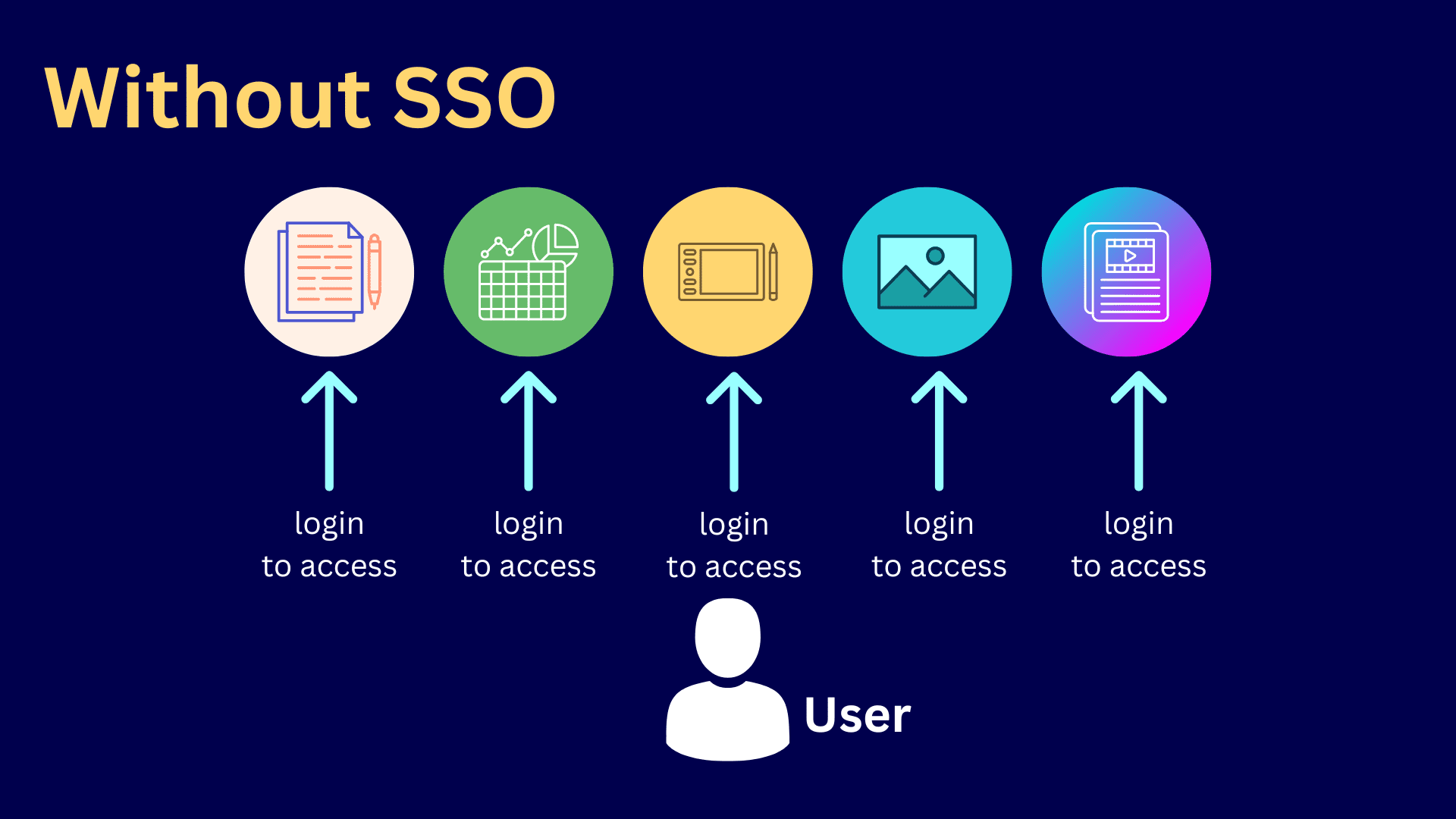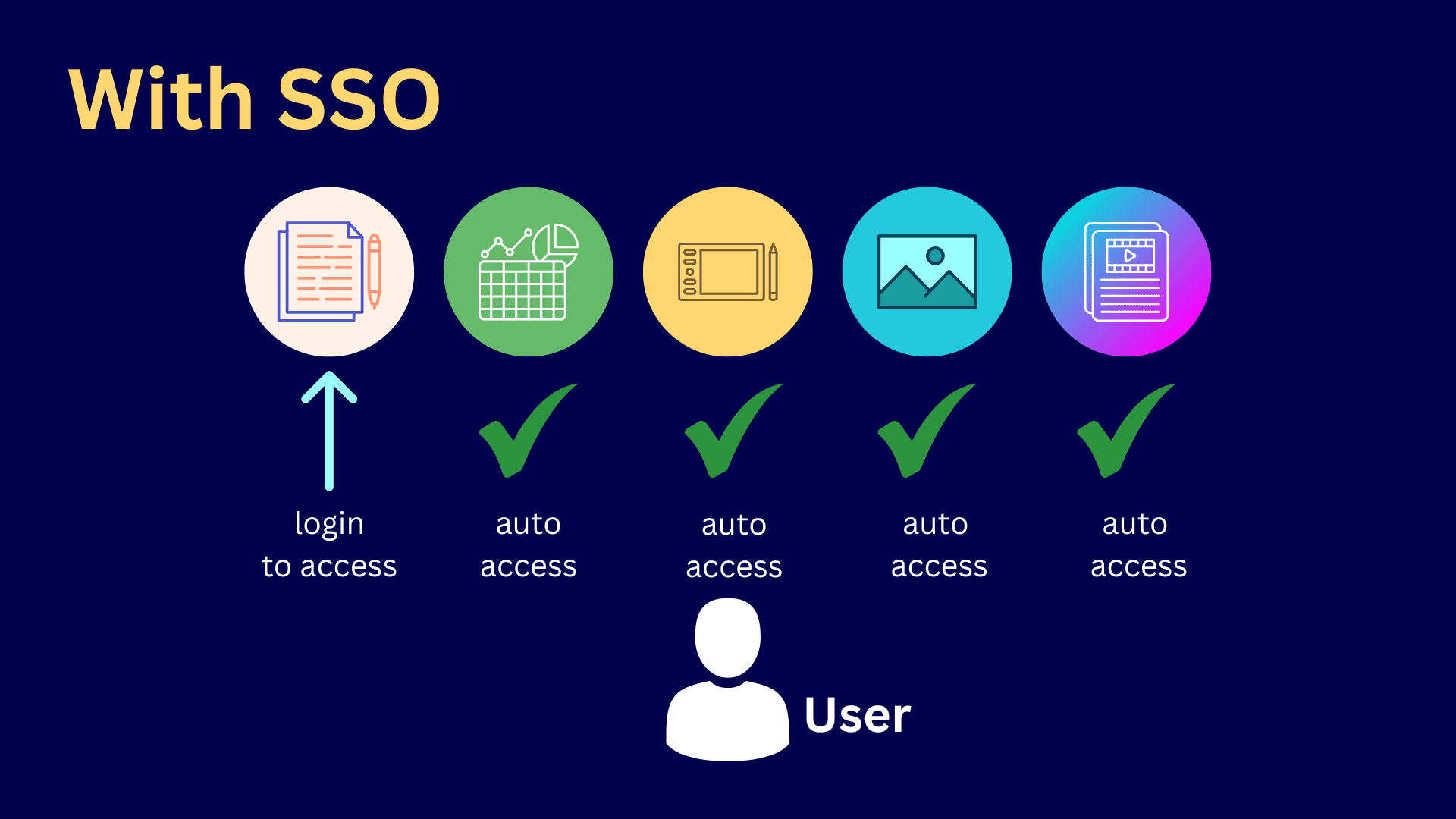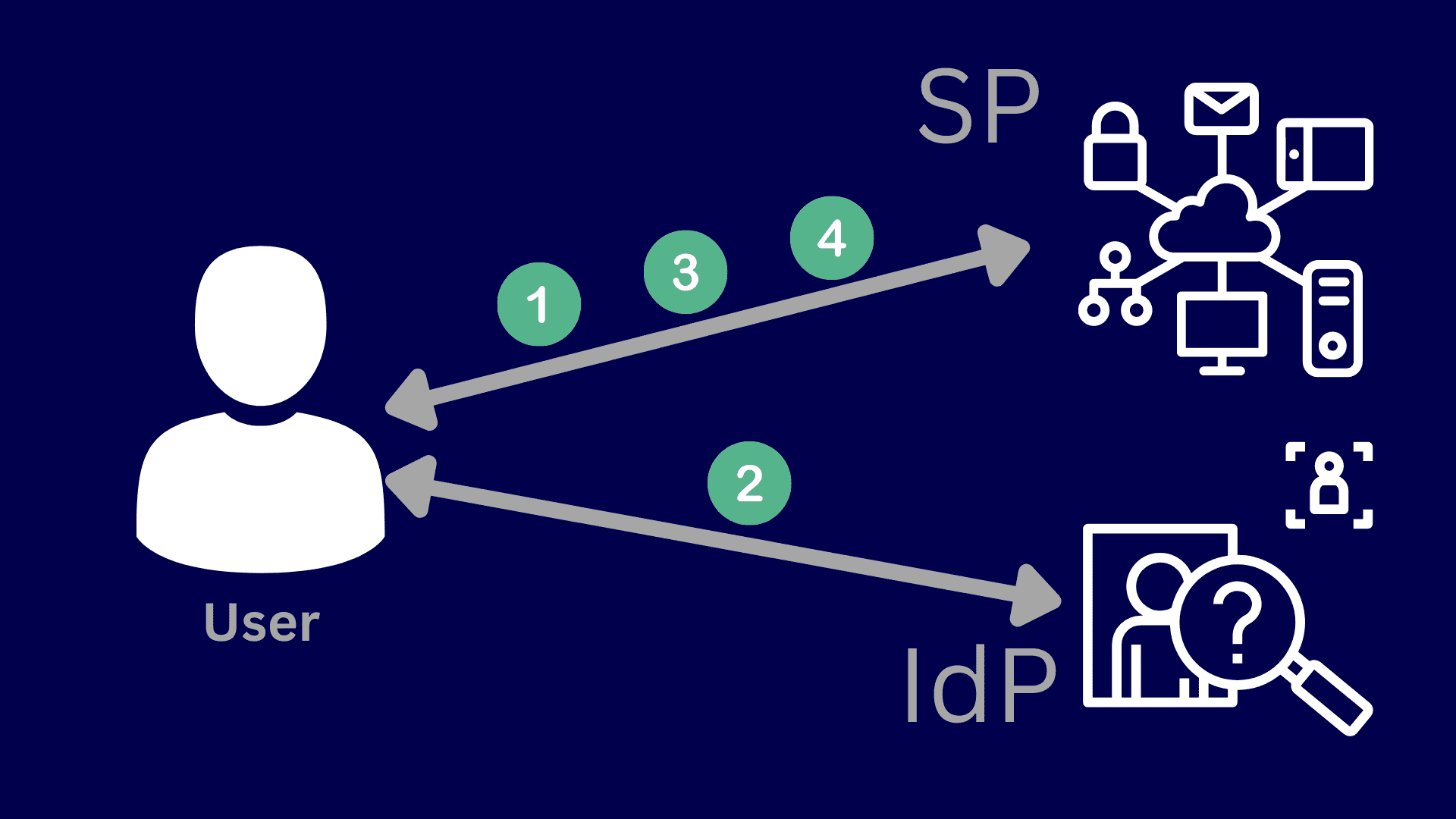
The benefits of SSO and why your business needs it
Single sign-on, or SSO, is a service that enables users to authenticate only once and then be able to access multiple applications and services integrated with that SSO service. In this article, we’re going to discuss the definition and functionality of SSO, the benefits of SSO both from an IT administrator and end-user standpoint, and the challenges you’re bound to encounter when implementing it.
What is SSO, and how does it work?
As indicated earlier, SSO is a service that reduces the number of times a user must log in, i.e., enter usernames and passwords for multiple applications/services, to one. The diagrams below illustrate this. As you can imagine, SSO works best in organizations where users log in to several applications in a day.

Multiple logins without SSO

Multiple logins with SSO
A typical SSO infrastructure consists of 3 key actors:
- The user – This is the person logging into the application or server.
- The identity provider (IdP) – This is the provider responsible for authenticating the user.
- The service provider (SP) – This is the provider providing the service or application that the user wishes to gain access to.
What are the steps of an SSO-enabled login process?
Let’s now walk through the basic steps of an SSO-enabled login process. Use the following diagram as a reference.

Simplified SSO login process
- The user navigates to an application/service. If the user has not yet been authenticated, the service provider redirects the user to the IdP.
- The user authenticates with the IdP. If the authentication is a success, the IdP issues the user an assertion that serves as proof that the user has already been authenticated.
- The assertion is submitted to the service provider.
- The service provider receives the assertion and grants the user access to the application or service.
Of course, a lot of things happen in the background, but these are the basic steps.
So, exactly what are the benefits of SSO? Let’s talk about that now.
What are the key benefits of SSO?
Although the benefits of SSO implementation can impact your entire organization positively, they are felt largely by two groups of stakeholders: end users and IT team members.
For your end users
Some of the key benefits of SSO authentication for end users include reducing multiple passwords and the resulting increase in productivity.
Eliminates the need to keep track of multiple passwords
Many non-SSO-equipped organizations have stringent password policies that require users to maintain unique passwords for every application and service they access. If a user needs to access 20 applications/services to accomplish tasks, that user will have to maintain 20 different passwords. Because SSO requires only a single username/password combination, users no longer have to keep track of multiple passwords. They just need to remember one combination.
Boosts user productivity
In a typical business setting, users need to access multiple applications and network services every single day. Logging in to each application/service can be very time consuming. That’s not even taking into account failed logins and login storms, which are holdups caused by a large number of users attempting to log in simultaneously. Because SSO reduces user logins to just one, users can accomplish tasks faster. It’s the reason why we hear a lot of great feedback about the implementation of SSO in healthcare.
For your IT teams
Some of the key benefits of SSO authentication for IT administrators and other IT team members include user adherence to password rules, user password reset call reduction, and administrative ability to track and control application access.
Enables enforcement of stronger and more realistic password policies
One of the problems that stems from unrealistic security policies is that users tend to look for workarounds, which defeats the purpose of those policies. For example, if you require users to use complex and lengthy passwords for every single application login, many of them might write their list of passwords in a notebook or on a sticky note that other users can see easily. With single sign-on, administrators can enforce those same stringent policies without users resorting to workarounds because a single password is easier to remember.
Eases the burden on your help desk
According to Statista, 34% of respondents worldwide needed to reset their password roughly once a month in 2022. If you’re a help desk agent and you’re responsible for changing passwords, the sheer frequency of password requests can consume a lot of your time. If you implement SSO, password resets will go down because users won’t have many passwords to track and, consequently, forget. In turn, your help desk can focus on more critical issues.
Provides better visibility and control of application access
SSO solutions enable IT teams to track and monitor the applications that users access. Moreover, SSO solutions also provide IT the ability to control what resources users can access. All these capabilities are provided through a single solution, thereby streamlining application access control initiatives.
What is SSO like for users?
Here is a typical SSO login process from the point of view of a user. Let’s say you haven’t logged in to your SSO service yet. When you arrive at the login screen of an application that’s been integrated with your SSO service, you’ll be asked to authenticate.
As with any password login process, you just have to enter your username and password. There may be a couple of additional steps, like choosing the right SSO service, but that’s basically it. Once you load another application that uses the same SSO service as the one you already logged in to, you won’t have to enter your login credentials for that application anymore.
This experience holds true for all other applications you navigate to. It doesn’t matter if there are five, 10, or more applications. For as long as each application you wish to access has been integrated with your SSO service, you won’t have to enter your login credentials anymore.
What are the challenges of SSO?
SSO implementation isn’t devoid of challenges, so it’s only fair to mention them here. It is, however, worth noting that the benefits of SSO far outweigh these challenges.
Requires strict adherence to password policies
Since the security of user access to multiple applications depends on a single password, that password must strictly adhere with password policies—e.g., it must be long and complex—and must always be kept confidential.
Requires high availability
If your SSO service somehow becomes unavailable, users won’t be able to access their applications. That’s going to cause considerable downtime. Hence, it’s important to build your SSO infrastructure using high-availability architecture.
Introduces risk in multi-user workstations
When multiple users share a single workstation, it’s important to ensure that each user completely logs out when done. Otherwise, the next user will have access to the previous user’s applications and files. On the flip side, a single SSO logout already logs the current user out of all applications and files as well.
Introduces additional deployment complexity
Usually, an SSO solution consists of multiple components, each with their own complexities. You still need to configure your IdP, set up digital certificates, integrate each service provider with that identity provider, and so on. The entire process can be quite challenging, to say the least. Of course, once you’ve overcome that hump, you have also eliminated a lot of administrative burdens.
Enjoy all the benefits of SSO and enhanced security with Parallels RAS
One particular software application that takes advantage of the benefits of SSO is Parallels® RAS. Parallels RAS is a secure virtual desktop infrastructure (VDI) solution that gives workers access to virtual applications and desktops from PCs, laptops, phones, tablets, and just about any device. Parallels RAS integrates seamlessly with all major Security Assertion Markup Language (SAML) SSO identity providers, including Microsoft Azure, Okta Identity, Ping Identity, and Gemalto SafeNet.
Once you’ve configured Parallels RAS SSO capabilities, every Parallels RAS user that’s already logged in to any other application integrated with your SSO IdP will be logged in to Parallels RAS automatically on the same device as well. Similarly, if a user is already logged in to Parallels RAS, that user will also be logged in to all other applications accessible through the same device automatically. This will boost your overall productivity greatly.
In addition to SSO, Parallels RAS is also equipped with other secure network access features like:
- Multifactor authentication (MFA) – Augments password-based authentication with a one-time password (OTP), making it more difficult for a threat actor to gain unauthorized access to your Parallels RAS infrastructure.
- Advanced filtering rules – Further restricts access to your published resources by allowing you to define filtering rules based on users/groups, Internet Protocol (IP) address, media access control (MAC) address, and devices.
- Data-in-motion encryption via Secure Sockets Layer / Transport Layer Security (SSL/TLS) – Protects connections to your Parallels RAS infrastructure from network-based attackers who might be eavesdropping on your network.
- Client policies – Allows you to specify what users can and cannot do in terms of settings such as Parallels RAS connection properties, display, printing, scanning, audio, keyboard, device, and others. This enables you to avoid undesirable situations caused by user misconfigurations.
When combined, this multi-layered security system can significantly reduce risk when users access applications remotely. Users are exposed to various threats, especially when they work remotely, beyond the reach of your corporate firewall. A multi-layered security system can help you address those threats.
An SSO-equipped VDI solution like Parallels RAS can greatly enhance security, flexibility, and productivity in any organization where workers’ daily tasks involve using software applications. Want to see if it’s a good fit for your business?

